
Hannes Bok, pseudonym for Wayne Francis Woodard, was an American artist and illustrator, as well as an amateur astrologer and writer of fantasy fiction and poetry. He painted nearly 150 covers for various science fiction, fantasy, and detective fiction magazines, as well as contributing hundreds of black and white interior illustrations. Bok's work graced the pages of calendars and early fanzines, as well as dust jackets from specialty book publishers like Arkham House, Llewellyn, Shasta Publishers, and Fantasy Press. His paintings achieved a luminous quality through the use of an arduous glazing process, which was learned from his mentor, Maxfield Parrish. Bok shared one of the inaugural 1953 Hugo Awards for science fiction achievement.
Arkham House is an American publishing house specializing in weird fiction. It was founded in Sauk City, Wisconsin, in 1939 by August Derleth and Donald Wandrei to publish hardcover collections of H. P. Lovecraft's best works, which had previously been published only in pulp magazines. The company's name is derived from Lovecraft's fictional New England city, Arkham, Massachusetts. Arkham House editions are noted for the quality of their printing and binding. The colophon for Arkham House was designed by Frank Utpatel.
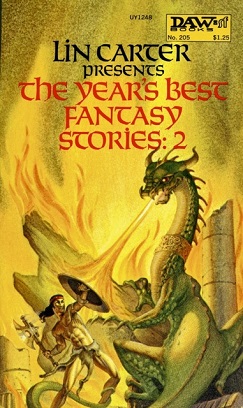
George Edward Barr is an American science fiction and fantasy artist.

Virgil Finlay was an American pulp fantasy, science fiction and horror illustrator. He has been called "part of the pulp magazine history ... one of the foremost contributors of original and imaginative art work for the most memorable science fiction and fantasy publications of our time." While he worked in a range of media, from gouache to oils, Finlay specialized in, and became famous for, detailed pen-and-ink drawings accomplished with abundant stippling, cross-hatching, and scratchboard techniques. Despite the very labor-intensive and time-consuming nature of his specialty, Finlay created more than 2600 works of graphic art in his 35-year career.
Donald M. Grant, Publisher, Inc. is a fantasy and science fiction small press publisher in New Hampshire that was founded in 1964. It is notable for publishing fantasy and horror novels with lavish illustrations, most notably Stephen King's The Dark Tower series and the King/Peter Straub novel The Talisman.

Castle of Frankenstein was an American horror, science fiction and fantasy film magazine, published between 1962 and 1975 by Calvin Thomas Beck's Gothic Castle Publishing Company, distributed by Kable News. Larry Ivie—who also was cover artist for several early issues—and Ken Beale edited the first three issues. Writer-artist Bhob Stewart edited the magazine from 1963 into the early 1970s. Although promoted and sold as a "monster magazine," readers were aware that Castle of Frankenstein, at the time, was the only nationally distributed magazine devoted to a legitimate and serious coverage of B movies. In addition to its central focus on classic and current horror films, Castle of Frankenstein also devoted pages to amateur filmmakers and fanzines. Its advertising pages sold full-length silent feature films such as The Lost World and The Golem: How He Came into the World.
Finlay is a masculine given name, and also a surname. The given name is represented in Scottish Gaelic as Fionnlagh.
American Fantasy Press is a science fiction/fantasy/horror specialty press owned and operated by Robert T. Garcia and Nancy Garcia. Located in Woodstock, Illinois, the press has published: The first U.S. hardcover edition of Dennis Etchison's Darkside ; the chapbook edition of The Man on the Ceiling by Steve Rasnic and Melanie Tem, the chapbook of A Walking Tour of the Shambles by Neil Gaiman and Gene Wolfe, the first U.S. hardcover edition of Michael Moorcock's The Dreamthief's Daughter, the chapbook The Broecker Sampler, featuring the artwork of Randy Broecker, a broadsheet of Jo Fletcher's poem Midnight Monster illustrated by Gahan Wilson, and the first hardcover edition of the Mary Frances Zambreno's short story collection Invisible Pleasures. It published the fantasy short story collection by Mike Resnick, Stalking the Zombie which features his hard-boiled detective John J. Mallory in an alternate Manhattan. In 2015, the press published The Collectors' Book of Virgil Finlay, by Robert Weinberg, Douglas Ellis and AF publisher Robert Garcia.
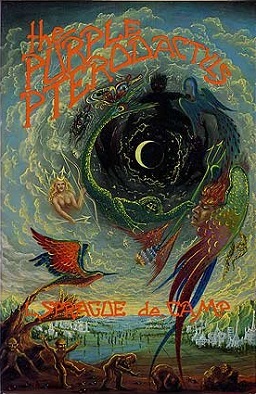
The Purple Pterodactyls is a collection of fantasy short stories by American writer L. Sprague de Camp. The collection was first published in hardcover by Phantasia Press in January, 1980, and in paperback by Ace Books in April of the same year. It has also been translated into German. An e-book edition was published by Gollancz's SF Gateway imprint on September 29, 2011 as part of a general release of de Camp's works in electronic form. The pieces were originally published between 1975 and 1979 in the magazines The Magazine of Fantasy & Science Fiction, Fantastic, Escape!, and Fantasy Crossroads.

Swords and Sorcery is an anthology of fantasy short stories in the sword and sorcery subgenre, edited by L. Sprague de Camp and illustrated by Virgil Finlay. It was first published in paperback by Pyramid Books in 1963, but most of the stories were originally from 1930s pulp magazines. This was first sword and sorcery anthology ever assembled, and was followed by three additional such anthologies edited by de Camp. It has also been translated into German.
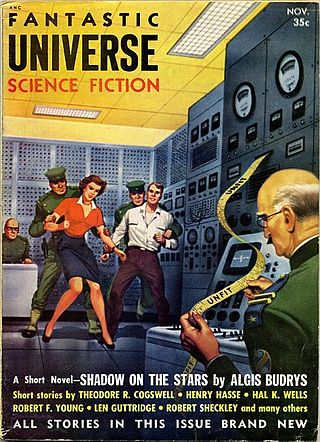
Fantastic Universe was a U.S. science fiction magazine which began publishing in the 1950s. It ran for 69 issues, from June 1953 to March 1960, under two different publishers. It was part of the explosion of science fiction magazine publishing in the 1950s in the United States, and was moderately successful, outlasting almost all of its competitors. The main editors were Leo Margulies (1954–1956) and Hans Stefan Santesson (1956–1960); under Santesson's tenure the quality declined somewhat, and the magazine became known for printing much UFO-related material. A collection of stories from the magazine, edited by Santesson, appeared in 1960 from Prentice-Hall, titled The Fantastic Universe Omnibus.

The Outsider and Others is a collection of stories by American writer H. P. Lovecraft. It was released in 1939 and was the first book published by Arkham House. 1,268 copies were printed. It went out of print early in 1944 and has never been reprinted.
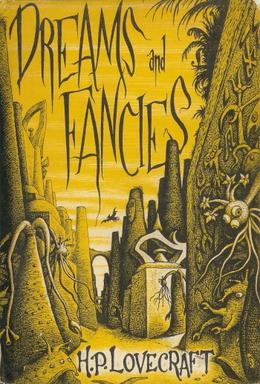
Dreams and Fancies is a collection of letters and fantasy, horror and science fiction short stories by American author H. P. Lovecraft. It was released in 1962 by Arkham House in an edition of 2,030 copies and was the sixth collection of Lovecraft's work to be released by Arkham House.
Stephen Emil Fabian Sr. is an American artist.
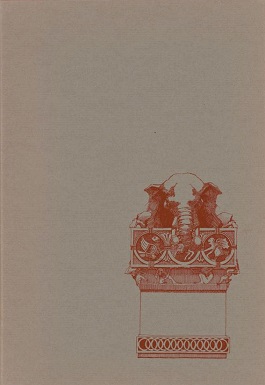
The Tower of the Elephant is a 1975 collection of two fantasy short stories by American writer Robert E. Howard featuring his sword and sorcery hero Conan the Barbarian. The book was published in 1975 by Donald M. Grant, Publisher, Inc. as the third volume of their deluxe Conan set. The title story originally appeared in the magazine Weird Tales. "The God in the Bowl" is the original version of the story that first appeared, edited by L. Sprague de Camp, in the magazine Space Science Fiction.
Underwood–Miller Inc. was a science fiction and fantasy small press specialty publishing house in San Francisco, California, founded in 1976. It was founded by Tim Underwood, a San Francisco book and art dealer, and Chuck Miller, a Pennsylvania used book dealer, after the two had met at a convention.

Virgil Finlay is a memorial collection of drawings by and appreciations of Virgil Finlay. It was compiled and edited by Donald M. Grant and published in 1971 by Donald M. Grant, Publisher, Inc. in an edition of 1,202 copies.
Centaur Press, later renamed Centaur Books, was a New York-based small publisher active from the late 1960s through 1981. The press was founded by Charles M. Collins and Donald M. Grant. It was primarily a paperback publisher, though one of its more successful titles was reissued in hardcover. It was notable for reviving pulp adventure and fantasy works of the early twentieth century for its "Time-Lost Series."

Swordsmen and Supermen is an American anonymously edited anthology of fantasy stories by Robert E. Howard and others, with a cover by Virgil Finlay. It was first published in paperback by Centaur Press in February 1972. The anonymous editor has been identified by bibliographers Jack L. Chalker and Mark Owings and by critic Roger C. Schlobin as the publisher, Donald M. Grant.

Famous Fantastic Mysteries was an American science fiction and fantasy pulp magazine published from 1939 to 1953. The editor was Mary Gnaedinger. It was launched by the Munsey Company as a way to reprint the many science fiction and fantasy stories which had appeared over the preceding decades in Munsey magazines such as Argosy. From its first issue, dated September/October 1939, Famous Fantastic Mysteries was an immediate success. Less than a year later, a companion magazine, Fantastic Novels, was launched.













